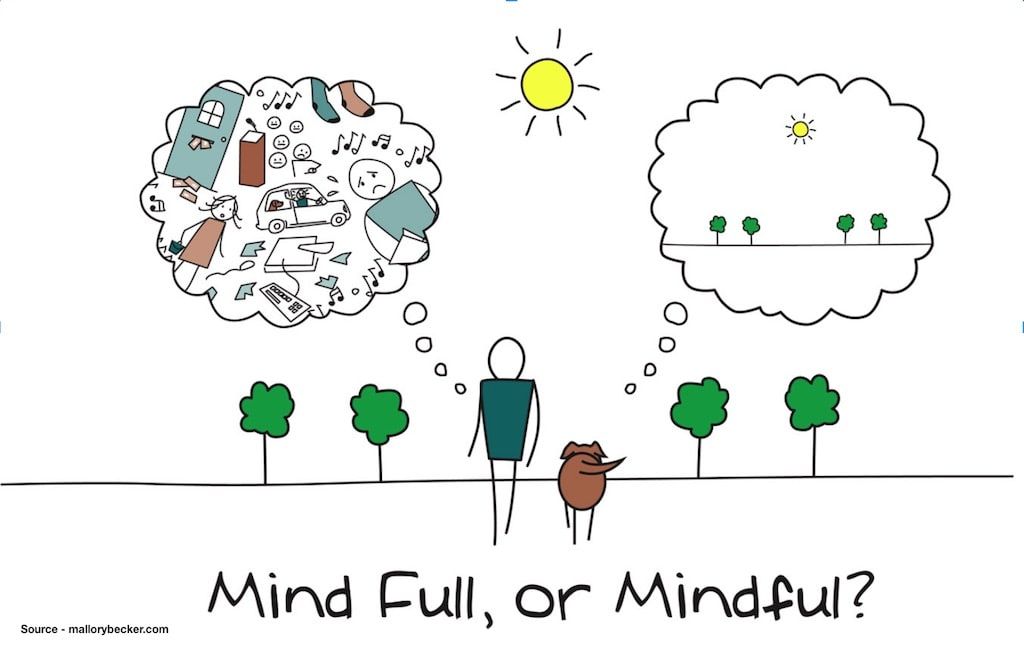As teachers we can spread ourselves pretty thin trying to balance our school responsibilities, managing our own lives, and worrying about our students. There is a lot to always be thinking about and we need to maintain our own physical, emotional, and mental wellbeing if we hope to see learners succeed in our classrooms. It is also important we are modeling ways students can maintain their own wellbeing as well, so they are prepared and ready to learn when they are in class.
I personally suffer from ADHD and sometimes I feel like I have all of the energy in the world, although I am not always very focused. I have always gotten my energy from interacting with other people or engaging in new activities. Because of this, I have developed a habit of getting as many "irons in the fire" as possible and a frequently spread myself too thin, leading to burn out. Students may have similar experiences where they have a lot going on in other areas of their lives and they just don't have the energy or desire to engage in academic materials.

When we have so much going on it can be challenging to distribute our energy efficiently to all areas of our lives. It doesn't take much to get out of sync and start feeling burnt out or overwhelmed, jeopardizing our potential reactions to different scenarios. Whether I am in a classroom or somewhere else and hit a wall I like to practice mindfulness meditation to get the energy and focus I need to complete the task in front of me.

"The goal of mindfulness is to wake the inner workings of our mental, physical, and emotional processes" (Foundation for a Mindful Society, 2020). Mindfulness focuses on who we are, where we are, and what we are doing in the present moment. When we are mindful we are aware and are able to control our reactions to the world around us.
When teachers are mindful we are able to be aware of our students and their particular situations. When challenges do arise in class we are able to react appropriately to keep everyone in the classroom safe without further escalating the situation. We are also able to acknowledge the different ways students learn and engage in classrooms and create lessons that cater to their individual needs.
Teacher mindfulness can also be very useful outside of the classroom. We often have families, hobbies, or even other jobs outside of teaching. By staying mindful we are able to focus our energy towards accomplishing the task in front of us instead of thinking about the many other things going on in our lives.
When students practice mindfulness they are restructuring their brain to become more aware. Their memory of the lesson content along with their behaviors can be improved from engaging in mindful practices. Mindfulness will also help students focus their energy on the task at hand so they are productively engaging in meaningful work.
Mindfulness meditation is fairly easy and doesn't require any materials, just a few minutes of the day. However, there are an assortment of instruments you can use to enhance the experience. When we are practicing mindfulness meditation the goal is to stay in the present moment. Distracting thoughts will come into our minds and that is completely normal, we just need to let them go and not focus on them. Mindfulness meditation is about really focusing on the present and training our brains to return to the moment we are in.
We can do mindfulness meditation with our students in our classrooms to help them improve their mindfulness as well. I have done this with students at the BGCMD and they grew to really enjoy our practices. We would set aside 2 minutes at the beginning of the program or the lesson and ask the students to just think about the present moment. We would often dim the lights, turn on essential oil diffusers, offer objects for students to feel during the exercise, or even ask students to try and listen to the single chime of a bell as the sound got softer and softer. I hope to continue using mindfulness activities in my own life and classroom to maintain mindfulness myself and to help my students become more mindful.
We can also create lessons including mindful practices. Lessons that offer a variety of sensory inputs will help students stay focused and energized throughout an activity. Teachers can also use questions during class so students are staying in the present moment. Having students describe what they are doing or how they are feeling during an exercise will encourage students to be reflective and increase their mindfulness.
Here is a great video about mindfulness meditation in public schools. They discuss how being mindful can prepare students for the challenges they will face in their own lives and also dive into how students experience and deal with their thoughts.
2020. "Getting Started with Mindfulness." Foundation for a Mindful Society. Retrieved from: https://www.mindful.org/meditation/mindfulness-getting-started/